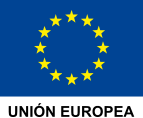OralImmunoAnalyser
Problem
Oral cancer represents the sixteenth type of cancer worldwide and represents a serious and growing public health problem. A significant part of oral cancers develop from potentially malignant disorders such as oral leukoplakia. So, its identification and intervention predictor of malignant transformation in premalignant stages could be key in reducing mortality, morbidity and the cost of treatment associated with oral cancer. One of the main predictors of malignant transformation of oral leukoplakia is the presence of epithelial dysplasia. However, this diagnosis is based on a static image and it has been shown that there is great inter- and intra-examiner variability when evaluating the presence or absence of dysplasia, as well as its degree. Biopsy and histopathological analysis is the conventional diagnosis of oral leukoplakia. However, changes at the molecular level occur before this histological evaluation \citep{mehrotra05}, so the use of immunohistochemical staining that reveals the expression of the cell proliferation biomarkers, such as ki67, could be a complementary technique to improve diagnosis and prognosis. Some studies show that the expression of ki67 staining could be used to estimate the degree of dysplasia in oral leukoplakia and the risk of malignant transformation in oral potentially malignant disorders.
The cell counting of these immunohistochemical images is classically carried out visually and manually with the help of devices designed for this purpose. These manual counting techniques are very time consuming, and the experts only count a reduced number of cells (normally 100). In general, the available software alternatives to analyse the immunohistochemical samples have some of the following drawbacks:
They usually have a high cost and a low flexibility to face with artifacts in the images or differences among samples
They do not allow the expert supervision before the quantification.
Proposed Solution: OralIMmunoAnalyser
The software OralImmunoAnalyser quantitatively estimates the immunohistochemical expression of the molecular marker ki67 in oral leukoplakia and fulfill the following requirements:
It is simple and easy to use, providing a friendly graphical user interface to interactively work with the images (a photograph taken under a microscope) and draw the region of analysis.
Use advanced image analysis and machine learning algorithms to automatically detect and classify cells in the images. OralImmunoAnalyser allows monitoring and supervision to see the cells to be accounted for each category before image quantification.
Estimate automatically various statistical measures and counts in the images, calculating the positivity in the basal, medium and superior layers of epithelium.
Allow the revision of the results at any time. In addition, this possibility of supervision by the expert favors that it can be used as a tool in the teaching-learning process to instruct junior researchers in cell counting.
It is fast enough to analyse images in real time.
For these reasons, OralImmunoAnalyser is superior to other available tools and its use could be easily implemented in the daily practice of the biomedical labs.
Demostration video

Collaborators
Publications
- Zakaria A. Al-Tarawneh, Maite Pena-Cristóbal, Eva Cernadas, José Manuel Suarez-Peñaranda, Manual Fernández-Delgado, Almoutaz Mbaidin, Mercedes Gallas-Torreira, Pilar Gándara-Vila. "OralImmunoAnalyser: a software tool for immunohistochemical assessment of oral leukoplakia using image segmentation and classification models". Frontiers in Artificial Intelligence, 2024, Vol. 7, pp. 1--13. (DOI) (PDF).
Downloads
Please, cite the paper above if you use the software OralImmunoAnalyser in your research.
- Usage and installation instructions (PDF)
- Windows installer - setupOralImmunoAnalyser.exe
- [Ubuntu 20.04 installer - oralImmunoAnalyzer_1.0_all.deb (available soon)]
Image and annotations dataset
The set of images and their annotations can be downloaded from the OIADB repository.
Información
-
- Investigadores
- Eva Cernadas García
- Zakarya Ayid Al Tarawneh
- Manuel Fernández Delgado
- Maite Pena Cristóbal
- Mercedes Gallas Torreira
- Pilar Gándara Vila



